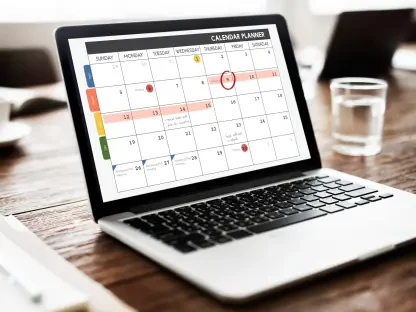Dive into the world of SEO with Anastasia Braitsik, a global leader in SEO, content marketing, and data analytics. With her finger on the pulse of the latest digital trends, Anastasia unravels the recent chaos surrounding Google Search rank and position tracking. In this insightful conversation, we explore the unexpected changes in Google’s search result displays, the ripple effects on third-party tools, peculiar data shifts in Google Search Console, and what these developments mean for the SEO community. Join us as we navigate the complexities of organic ranking data and uncover strategies to adapt to an ever-evolving landscape.
Can you walk us through the recent disruptions in Google Search rank and position tracking?
Absolutely. Over the past week or so, we’ve seen significant inconsistencies in how organic ranking data is being reported. Both Google Search Console and various third-party tracking tools are showing erratic or incomplete data. It started becoming noticeable late last week, and it’s been a hot topic among SEO professionals ever since. The main issue is that the data doesn’t align with historical patterns, leaving many of us scratching our heads trying to figure out what’s accurate.
What specific challenges are users encountering with their organic ranking data right now?
Users are seeing a range of problems, from missing data points to rankings that seem completely off-base. For instance, some are noticing sudden drops in impressions or bizarre jumps in average position metrics that don’t correlate with any recent site changes. It’s creating a lot of confusion because businesses rely on this data to gauge their visibility and make strategic decisions.
How has Google’s decision to remove the option to display 100 search results per page affected tracking tools?
This change has been a major blow to third-party tracking tools. Previously, many of these tools could pull 100 results with a single query, making data collection efficient. Now, with that option gone, they have to make multiple queries to get the same amount of data, which has skyrocketed their operational costs—sometimes by a factor of ten. It’s not just about cost, though; it’s also about the time and resources needed to adapt their systems to this new limitation.
What do you think prompted Google to limit the number of results per page in this way?
Honestly, it’s hard to say definitively without an official statement from Google. My hunch is that it might be tied to efforts to reduce server load or curb excessive scraping by automated tools. It could also be a move to control how data is accessed and push more users toward their paid APIs or other services. But until we hear directly from them, we’re all speculating.
How are third-party tools coping with the increased costs and limitations this change brings?
Many tools are in crisis mode, trying to rework their algorithms and processes to track beyond the first page of results. The increased cost is a huge barrier, especially for smaller providers who don’t have the budget to absorb a tenfold spike in expenses. Some are exploring workarounds like breaking queries into smaller chunks, but that’s not a perfect solution—it’s slower and still expensive. It’s a tough spot for them.
Have any specific tools publicly addressed these challenges, and what have they shared?
Yes, a couple of major players in the SEO space have come forward with statements acknowledging the issue. They’ve confirmed that their data collection has been impacted by Google’s removal of the 100 results parameter and are actively working on solutions. While I won’t dive into the specifics of their announcements, it’s clear they’re prioritizing transparency with their users and trying to mitigate the damage.
Are there tools that haven’t spoken out yet but are showing signs of struggle in their data reporting?
Definitely. I’ve noticed some tools where the data just looks off—missing rankings or metrics that don’t add up when compared to other sources or historical trends. These providers haven’t made public statements yet, which might mean they’re still assessing the situation or hoping to resolve it quietly. It’s something to keep an eye on if you rely on those platforms.
Shifting gears to Google Search Console, what oddities are users noticing in the performance reports lately?
There’s been a noticeable weirdness in the data, particularly around desktop impressions. Many users are seeing a significant drop in impressions over the past few days, which is paired with a sharp increase in average position. It’s counterintuitive because a drop in impressions usually wouldn’t correlate with better positions, so it’s raising a lot of questions about the reliability of the data right now.
What might be causing this sudden decline in desktop impressions in Google Search Console?
It’s tricky to pinpoint without more context from Google, but one theory is that it could be tied to changes in how data is aggregated or reported on the backend. Another possibility is that Google is adjusting how it tracks or attributes impressions, perhaps filtering out certain types of interactions. There’s also speculation that scraping or bot activity might have skewed data in the past, and this drop could be a correction—but that’s just a guess at this point.
How do you see this drop in impressions relating to the increase in average position that users are observing?
That’s the puzzling part. Normally, if impressions drop, you’d expect average position to worsen, not improve, because fewer people are seeing your content. The fact that we’re seeing the opposite suggests there might be a glitch in how positions are calculated or reported in Google Search Console. It could also mean that the impressions being filtered out are from lower-ranking positions, artificially inflating the average. We need more clarity to fully understand this connection.
Do you have any insights into why Google might have removed the 100 search results per page feature?
I’ve been mulling this over, and I think it’s likely an intentional move rather than a glitch. Google might be trying to manage resource allocation or limit the ease of large-scale data scraping, which has been a concern for years. It could also be a strategic push to encourage reliance on their own analytics tools over third-party solutions. I haven’t heard anything official from Google yet, but if this is permanent, it could reshape how the SEO community accesses and interprets search data.
What impact do you foresee for the broader SEO community if this change becomes permanent?
If this sticks, it’s going to be a game-changer. SEO professionals and businesses will face higher costs and slower data collection through third-party tools, which could limit access for smaller players. It might also drive a shift toward alternative data sources or force more reliance on Google’s own tools, which don’t always provide the depth or flexibility we need. Ultimately, it could widen the gap between well-funded organizations and independent marketers or small businesses trying to compete.
What is your forecast for the future of Google Search tracking and data reporting in light of these changes?
I think we’re at a turning point. If Google continues to tighten control over data access, we might see a fragmented landscape where SEO tools have to innovate rapidly or risk becoming obsolete. There could be a push toward more manual tracking methods or new technologies to bypass these limitations. On the flip side, if Google provides clarity or restores some functionality, it could stabilize things. Either way, adaptability will be key for anyone in this space over the next few months.









